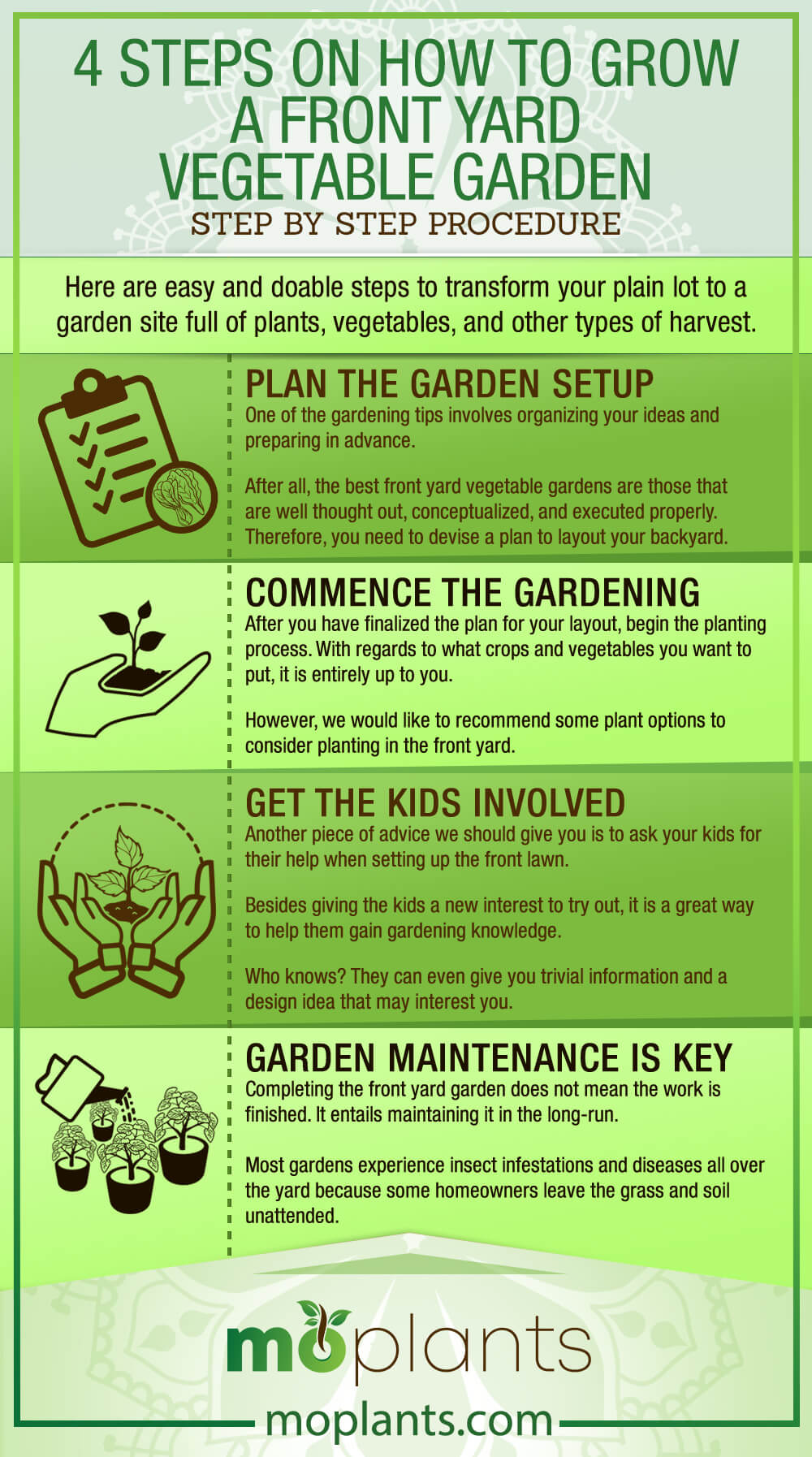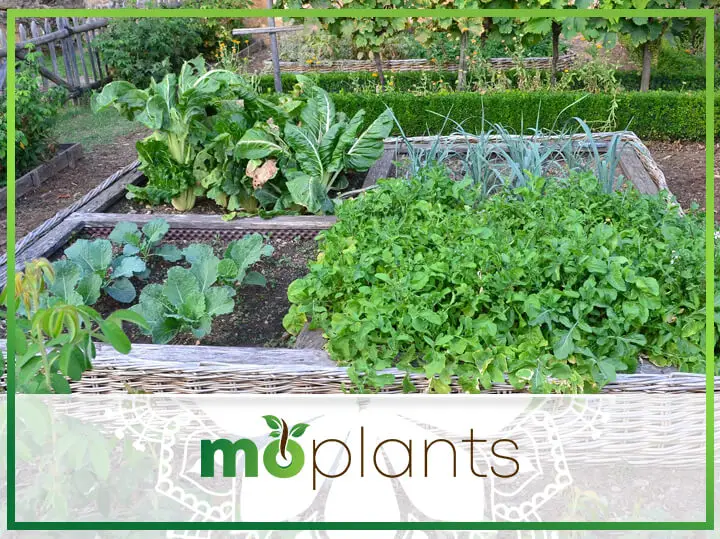Let’s be honest. One of the main considerations for your dream home is to surround it with a vegetable garden.
It appeals to the eyes and replenishes your food supply, thus lessening your trips to the grocery store.
Whether you are a beginner or expert gardener, this article will help your front lawn stand out among your neighbors’ houses.
Keep reading our article find out some tips on growing a front yard vegetable garden.
Step by Step Procedure
Here are easy and doable steps to transform your plain lot to a garden site full of plants, vegetables, and other types of harvest.
Plan the Garden Setup
One of the gardening tips involves organizing your ideas and preparing in advance. [R]
After all, the best front yard vegetable gardens are those that are well thought out, conceptualized, and executed properly. Therefore, you need to devise a plan to layout your backyard.
Think about all the plants, veggies, and edibles you want to put in the front yard. Also, consider the different color combinations you want to incorporate.
Commence the Gardening Process
After you have finalized the plan for your layout, begin the planting process. With regards to what crops and vegetables you want to put, it is entirely up to you.
However, we would like to recommend some plant options to consider planting in the front yard.
If you want to grow veggies, we suggest seasonal plants like tomatoes, peppers, and other edible vegetables.
To make the garden look a lot more beautiful, try adding many flowers to maximize the space. Not only do flowers offer an aesthetic appeal, but they also attract insects for pollination.
Get the Kids Involved
Another piece of advice we should give you is to ask your kids for their help when setting up the front lawn.
Besides giving the kids a new interest to try out, it is a great way to help them gain gardening knowledge. [R]
Who knows? They can even give you trivial information and a design idea that may interest you.
However, make sure to accompany them for an injury-free and more family-friendly gardening experience.
Garden Maintenance Is Key
Completing the front yard garden does not mean the work is finished. It entails maintaining it in the long-run.
Most gardens experience insect infestations and diseases all over the yard because some homeowners leave the grass and soil unattended.
To avoid these, make sure to eliminate dying harvest and rotting veggies. That way, you will prevent them from taking up unnecessary space and cause many negative effects on your vegetables.
It also pays to set a good example to other neighbors on maintaining a clean front yard all year round.
Infographic

What to Consider When Growing a Front Yard Vegetable Garden?
Now that we have finished discussing the steps on constructing the front yard garden, this part of the article- discusses the things you need to consider before, during, and after the gardening process.
Most articles would stop at the step-by-step procedure.
However, we believe that being a versatile and competent gardener involves knowing your surroundings, weather conditions, and other external factors.
Therefore, it is important to pay close attention to the additional information we are about to share.
In-Ground Beds or Raised Beds
First and foremost, you need to ask yourself, “What type of bed best suits my home? The raised bed or in-ground planting?”
Personally, we believe that going for the raised bed is the more viable option. For starters, raised beds lessens weeding issues because of the blocks and their tall border.
The border of most raised beds also separates healthy soil from road salt or other toxic components.
These reasons should be more than enough for you to consider using raised beds for your garden.
Sun Exposure
Most front yard vegetable gardens require ample sunlight for consistent growth and harvest. [R]
If you live in an area full of trees, it may be difficult to receive sufficient sun exposure.
One way to respond to this impediment is to look for tiny pockets of open spaces so that your herbs still get the sunlight they need.
You may also want to consider buying crops that do well in partial shade conditions.
We suggest reading related articles to help you devise a plan on inserting full-sun, partial shade, and full shade edibles.
Water
Water is another important factor next to sunlight exposure.
It maintains soil moisture, keeps the grass from drying up, and provides the vegetables with many vital nutrients.
As a responsible gardener, you need to water your front yard frequently. You would not want the garden to experience harmful effects such as soil erosion, wilted plants, etc.
For a more systematic approach, use a sprinkler system or drip irrigation so that you won’t have to keep going in and out of the garden.
Be sure to configure the settings before operating it.
Time
Finally, you need to consider how much you are willing to spend on the garden. You would not want to spend 8+ hours setting up the backyard.
To make better use of your time, lay out a feasible plan that you can follow for the succeeding days.
If you want to reduce your workload, seek help from your family members and other neighbors.
Extra hands and human resources may shorten the hours you need to allocate in assembling the front lawn.
Conclusion
We hope you enjoyed going over the steps on how to assemble a front yard vegetable garden.
Applying the proper materials and gardening techniques should result in a beautiful and fully harvested yard right at your door.
Most people might think you own vegetable gardens all across San Francisco.
Neighbors and gardeners will take inspiration from your lawn when their turn to work on their respective front yard gardens.
For more questions, concerns, or related articles, please feel free to inquire with us.


